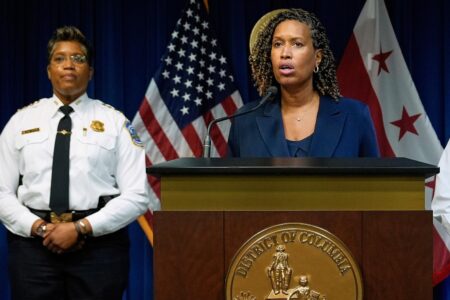Federal Court Overturns Education Department’s Restrictions on School Diversity Programs
A recent federal court decision has invalidated the U.S. Department of Education’s attempt to limit diversity and inclusion initiatives in public schools. This ruling represents a pivotal development in the contentious national discourse on how race and equity programs should be administered within educational institutions. Supporters of inclusive education hailed the verdict as a crucial defense of efforts to foster fairness and representation in schools, while opponents viewed it as a setback to the administration’s efforts to regulate certain curricular content. The case exemplifies the ongoing legal and political tensions surrounding race-conscious policies in American education.
Judicial Rebuff of Federal Limits on Diversity Efforts in Schools
The court’s decision emphatically rejected the Department of Education’s recent guidance, which sought to restrict programs designed to enhance cultural understanding and inclusivity in public schools. The judge found that the federal agency had exceeded its statutory authority by imposing these constraints, thereby infringing upon local control and academic freedom protected under the First Amendment. This ruling highlights the judiciary’s critical role in upholding educational equity initiatives despite mounting political pressures to curtail them.
Key factors influencing the court’s judgment included:
- Excessive federal intervention in local school programming
- Potential infringement on constitutional protections related to free speech and academic autonomy
- Recognition of diversity programs as essential tools to combat systemic disparities
| Category | Department of Education Guidance | Federal Court Decision |
|---|---|---|
| Regulatory Reach | Highly restrictive | Declared unlawful and invalid |
| Legal Justification | Questionable statutory basis | Insufficient legal foundation |
| Effect on Schools | Constrained diversity programs | Programs remain protected |
What This Means for School Districts and Education Policy
In the wake of this ruling, school districts are at a crossroads as they reconsider their approaches to diversity and inclusion. With the federal restrictions lifted, districts now enjoy enhanced discretion to design and implement programs that reflect their unique community demographics and values. However, this autonomy comes with the challenge of navigating complex legal landscapes without clear federal guidelines.
Education leaders must strike a delicate balance between fostering inclusive environments and ensuring compliance with evolving legal standards. This decision encourages districts to innovate and customize their diversity efforts while remaining vigilant against potential legal challenges.
Key considerations for policymakers include:
- Increased Policy Adaptability: Schools can now develop tailored diversity initiatives without immediate fear of federal penalties, opening the door for creative, locally relevant solutions.
- Heightened Legal Awareness: School boards should collaborate closely with legal counsel to ensure their programs are defensible in court.
- Active Community Involvement: Engaging parents, students, and stakeholders transparently is essential to build consensus and support for diversity policies.
| Focus Area | Recommended Emphasis | Critical Consideration |
|---|---|---|
| Curriculum Development | Incorporate diverse perspectives and histories | Ensure balanced representation without bias |
| Admissions Policies | Promote equitable access and opportunity | Adhere to anti-discrimination laws |
| Staff Training | Enhance cultural competence and awareness | Commit to ongoing professional development |
Insights from Legal Authorities on Civil Rights and Inclusion
Legal scholars and civil rights advocates have weighed in on the implications of the court’s ruling, noting its potential to reinforce protections for diversity initiatives in education. Many experts view the decision as a corrective measure against a growing trend of federal restrictions that threatened to undermine programs addressing racial and socioeconomic disparities.
One constitutional law expert remarked, “This ruling affirms the legal safeguards for policies aimed at dismantling systemic inequities and upholding equal educational opportunities.” The verdict may set a precedent for future litigation challenging federal overreach in education policy, emphasizing the judiciary’s role in balancing governmental authority with civil rights protections.
Despite optimism, some caution that the absence of clear federal guidelines could create uncertainty for schools. Advocates urge the establishment of definitive legal standards to ensure consistent and effective implementation of diversity programs, while critics warn of potential ambiguities that may complicate compliance.
| Expert Role | Expected Outcome | Recommended Actions |
|---|---|---|
| Constitutional Law Specialist | Strengthened legal basis for diversity policies | Track emerging court cases and rulings |
| Education Policy Researcher | Expanded flexibility for school programs | Design comprehensive inclusion frameworks |
| Civil Rights Advocate | Improved protections for marginalized communities | Advocate for clearer legislative guidance |
Guidance for Schools to Sustain and Strengthen Diversity Programs
In light of shifting federal directives, school administrators and educators must emphasize transparent communication and active community participation to successfully uphold diversity initiatives. Clearly articulating the goals and benefits of these programs fosters trust among families, staff, and students, reinforcing their legitimacy amid external scrutiny.
Schools are advised to maintain meticulous documentation of program objectives, implementation processes, and measurable outcomes to safeguard against potential legal disputes. Partnering with legal professionals and diversity experts can help ensure that initiatives comply with current laws while embodying principles of equity and inclusion.
Additionally, investing in ongoing cultural competency training for staff and adopting adaptable program models will enable schools to respond effectively to evolving policy environments. The following table outlines strategic priorities for educational institutions:
| Strategic Area | Recommended Practices |
|---|---|
| Legal Adherence | Engage education law specialists regularly for compliance reviews |
| Stakeholder Communication | Organize community forums and share transparent program data |
| Professional Development | Offer continuous workshops on cultural awareness and inclusion |
| Record Keeping | Document program impacts and adjustments thoroughly |
| Program Adaptability | Modify initiatives proactively in response to legal and social changes |
Conclusion: Navigating the Future of Diversity in Education
This landmark ruling represents a critical juncture in the debate over diversity initiatives within public education. As schools and policymakers interpret and respond to the decision, the balance between federal oversight and local autonomy remains in flux. The Department of Education has not yet indicated whether it will pursue an appeal, leaving the trajectory of diversity programs uncertain amid a dynamic legal and political landscape. Moving forward, educational leaders must remain vigilant and proactive to ensure that efforts to promote equity and inclusion continue to thrive.





